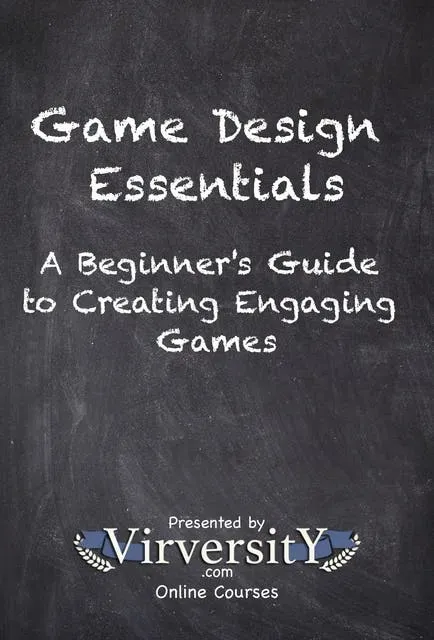Game design essentials guide how creators craft engaging, lasting experiences. Among the elements of a great game, players seek clear goals, meaningful choices, and a satisfying progression. Strong game design principles balance challenge and skill to keep players in a flow state. Understanding game mechanics and systems helps designers predict how actions ripple through the world. Effective player engagement strategies align rewards with curiosity, exploration, and social play.
Seen through a broader lens, these ideas resemble a design philosophy for interactive experiences that centers on player choice, feedback, and balance. From a development perspective, the core concepts emphasize clear rules, scalable progression, and meaningful loops that invite experimentation. As the medium evolves, practitioners study how games evolve not just in technology but in player behavior, keeping a pulse on accessibility and community health.
Game design essentials: building enduring experiences from core loops and progression
Game design essentials are more than a checklist; they are the spine of a memorable experience. By anchoring design around a clear core loop, a thoughtful progression, and immediate yet informative feedback, teams capture the elements of a great game in practice. This approach helps players feel a tangible sense of progress, mastery, and purpose as they engage with the game world.
In applying these ideas, you start with empathy for players—anticipating their goals, pain points, and moments of delight. You build an onboarding flow that teaches mechanics quickly, while balancing challenge and skill to keep beginners engaged and veterans satisfied. This aligns with established game design principles and supports effective player engagement strategies across genres and platforms.
From mechanics to systems: harnessing mechanics and systems for emergent play and lasting engagement
Mechanics and systems sit at the heart of how a game operates and evolves. Grounded in the MDA framework, mechanics are the rules players manipulate, while systems describe how those rules interact at scale to create dynamics and, ultimately, aesthetics such as tension or wonder. A strong design foregrounds how mechanics feed into meaningful dynamics, producing emergent gameplay and satisfying play patterns.
To sustain engagement over updates and across players, designers must balance depth with accessibility, enable diverse playstyles, and design for iterated improvement. This means thoughtful pacing, robust telemetry for balance, fair monetization, and a content cadence that keeps communities excited. As games evolve with technology and culture, adaptable mechanics and scalable systems become the engine for longevity and ongoing player engagement strategies.
Frequently Asked Questions
What are the core elements of Game design essentials and how do game mechanics and systems contribute to player engagement strategies?
Game design essentials center on aligning mechanics, systems, and player psychology to deliver engaging experiences. Core elements of a great game include clear goals, a strong core loop, meaningful choices, balanced progression, responsive feedback, and accessibility. In practice, design around game mechanics and systems: define the rules, craft a resource economy, and ensure dynamics emerge that reward mastery and exploration. To boost player engagement strategies, balance challenge with skill, provide immediate feedback, and progressively unlock new tools or areas. Start with a coherent core loop; keep progression steady but not overpowering; communicate rules clearly; design onboarding to be welcoming; test with diverse players and iterate based on qualitative and quantitative data. By focusing on empathy—anticipating how players will approach the game—you create durable, accessible experiences that endure updates and platforms.
How do game design principles adapt as games evolve, and how can designers apply them to optimize the core loop, progression, and accessibility to improve player engagement strategies?
Over time, game design principles adapt as technology, culture, and player expectations shift—this is how games evolve. Core principles include clear goals, balanced difficulty, a strong core loop, meaningful choices, and responsive feedback. As technology advances—rendering, AI, procedural generation—and live-service models rise, designers expand progression systems, pacing, and content cadence to sustain engagement. Practical takeaways: design flexible systems that support multiple playstyles, foreground emergent gameplay without excessive complexity, and maintain accessibility for broad audiences. Use onboarding that scales with experience, balance systems to avoid runaway power, and test with diverse players to validate assumptions. Iterate with qualitative feedback and quantitative data, refining the core loop and reward structure to deliver engaging, durable experiences across updates and platforms.
| Topic | Key Points | Notes |
|---|---|---|
| Introduction |
|
— |
| What makes a great game? |
|
— |
| Core concepts in practice |
|
— |
| Key game design principles |
|
— |
| Game mechanics and systems |
|
— |
| Elements of a great game |
|
— |
| How games evolve |
|
— |
| Putting it into practice: a design exercise |
|
— |
| Conclusion |
|
— |



